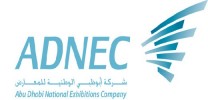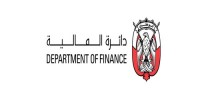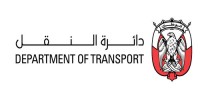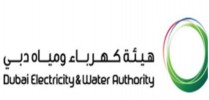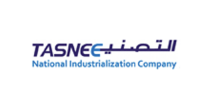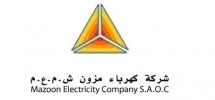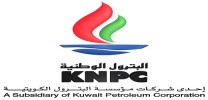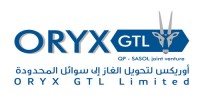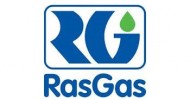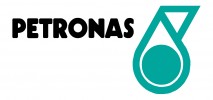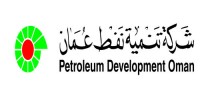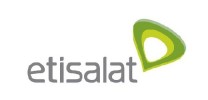
HV and LV Switchgear
Course Introduction:
This Switchgear Electrical Circuit Breakers - Maintenance training course will discuss Application, Installation, Maintenance and Testing issues related to Low-, Medium- and High-Voltage Switchgear and Electrical Circuit Breakers. The course will provide the delegates with a solid understanding of switchgear theory and standards. The course will also make delegates aware of issues concerning the proper application, installation and maintenance of these types of equipment with a strong emphasis on safety. The course will cover a wide range of material starting from the basics and moving on to more complex issues
This course provides an overview of Power System Design and Theory, focusing on the power distribution electrical circuit breakers used in common utility, industrial, commercial and institutional applications. Basic electrical circuit breaker construction, electrical safety, and common circuit breaker maintenance techniques are the major components of this course.
Course Objectives:
This course is designed to enable participants to:
- List the voltage convention classifications used in this course.
- Describe Switchgear Construction.
- Describe a Ground Fault Relay System.
- Describe the three basic types of Low and Medium voltage circuit breaker contacts.
- Describe the molded case Circuit Breaker
Who Should Attend?
This course is recommended for skilled Trades, Supervisors, Foremen, Technicians anyone involved in the Maintenance of Switchgear.
Course Outline:
DAY 01
MODULE (01) INTRODUCTION OF SWITCHGEARS PRINCIPLES AND APPLICATIONS
1.1 Safety & Electricity safety roles
1.1.1 What Is Electricity?
1.1.2 Electrical Hazards
1.1.3 Effects of Electric Current On Human Body
1.1.4 Energized Work
1.1.5 Electrical Accidents &Personal Protective Equipment
1.2 General Introduction
1.3 Basic Components of Electric Power System
1.4 Types of Substations (Transmission and Distribution)
1.5 Switchgear Drawings
1.6 Switchgear Ratings
1.7 Difference Between Switchgear & Switchboards
1.8 Types of HV Isolators, Switches and Circuit Breakers
1.9 Distribution Layout and Configuration
1.10 Distribution System Configuration:
1.10.1 Radial
1.10.2 Loop (ring)
1.10.3 Network
1.10.4 Primary Selective
1.11 Standard Device Function Numbers
1.12 Substation Equipments
1.13 Major elements of distribution system
1.14 Switchgear Factory Testing
1.15 Short Circuit Current Estimation
DAY 02
MODULE (02) CIRCUIT BREAKER OVERVIEW
2.1 Purpose/application
2.2 Principle of Switchgear
2.3 Location of Switchgear, Sub - Station Equipment
2.4 Types of Switchgears - LV metal clad switchgear and Motor Control Centers (MCC)
2.5 Low voltage circuit Breakers classification, Rated quantities, types of releases and tests.
2.6 Circuit Breaker Construction
2.7 Circuit Breaker Operation
2.8 Circuit Breaker Control
2.9 Modern ( LV – MV - HV ) Switchgear
2.10 Personnel and Equipment Safety Factors
MODULE (03) CIRCUIT BREAKER MAINTENANCE
3.1 Function of Circuit breakers
3.2 Arc Phenomena and Circuit Interruption
3.3 EHV Gas Insulated Switchgear
3.4 Modern Vacuum Distribution Switchgear
3.5 Modern SF6 Distribution Switchgear
3.6 Other Type of Circuit Breakers
3.6.1 Air Circuit Breakers
3.6.2 Oil Circuit Breakers
3.6.3 Synchronies Circuit Breakers
3.6.4 Dc Circuit Breakers
3.7 Maintenance frequencies
3.8 Inspection
3.9 Testing
3.10 Interpreting test results
3.11 Troubleshooting and repair
DAY 03
MODULE (04) SF6 CIRCUIT BREAKERS
4.1 SF6 - Gas Properties.
4.2 SF6 - Metal enclosed Switchgear.
4.3 SF6 - Apparatus and Components.
4.4 SF6 - Circuit Breakers.
4.5 Insulation Coordination and over Voltage Protection.
4.6 Handling, Maintenance, Inspection and Testing.
4.7 General Design Considerations.
4.8 SF6 Testing
4.9 Troubleshooting
MODULE (05) GROUNDING
5.1 Principles of grounding
5.2 Grounding procedures
5.3 Ground and test device
DAY 04
MODULE (06) PROTECTIVE EQUIPMENT & INSTRUMENT TRANSFORMERS
6.1 Potential Transformers ( PT )
6.2 Current Transformers ( CT )
6.3 Transformer Differential Protection
6.4 Motor Protection
MODULE (07) SWITCHGEAR MAINTENANCE
7.1 Operation of Switchgear Devices
7.2 Preventive Maintenance
7.3 Testing
7.4 Corrective Maintenance
MODULE (08) CIRCUIT BREAKER MAINTENANCE, CARE & TESTING
8.1 Mechanical Inspections
8.2 Contact Resistance Tests
8.3 Insulation Resistance Tests
8.4 Insulating Gas and Oil Analysis
8.5 Travel Analysis
DAY 05
MODULE (09) EQUIPMENTS RELATED TO SWITCGEARS
9.1 Transformer Construction
9.1.1 Tank
9.1.2 Core, Coils, Types and Ratings
9.1.3 Bushings
9.1.4 Tap Changers
9.1.5 Factory Testing
9.1.6 Dry, Oil and Liquid Filled Types
9.2 Auxiliary Equipment
9.2.1 Gas Relays
9.2.2 Fans and Pumps
9.2.3 Gauges
9.2.4 Tap Changer Controls
9.3 Failure Causes
9.3.1 Detailed analysis of several case histories
9.3.2 Lightening
9.3.3 Oil Decay
9.3.4 Component Failures
9.3.5 Internal Faults
9.3.6 External Faults
9.4 Testing Practices & Standards
9.4.1 Oil Analysis
9.4.2 Electrical Testing
9.4.3 Insulation Resistance and Polarization Index Tests
9.4.4 Turns Ratio, Excitation Current and Polarity Testing
9.4.5 Capacitance and Power Factor Testing
9.4.6 Winding Resistance Tests
MODULE (10) BATTERIES AND CHARGERS
10.1 Types of station batteries
10.2 Batteries Constriction
10.3 Lead Acid Batteries Advantages and Disadvantages
10.4 Maintenance
10.5 Inspection
10.6 Testing
Course Methodology:
A variety of methodologies will be used during the course that includes:
· (30%) Based on Case Studies
· (30%) Techniques
· (30%) Role Play
· (10%) Concepts
· Pre-test and Post-test
· Variety of Learning Methods
· Lectures
· Case Studies and Self Questionaires
· Group Work
· Discussion
· Presentation
Course Fees:
This rate includes participant’s manual, Hand-Outs, buffet lunch, coffee/tea on arrival, morning & afternoon of each day.
Course Timings:
Daily Course Timings:
08:00 - 08:20 Morning Coffee / Tea
08:20 - 10:00 First Session
10:00 - 10:20 Coffee / Tea / Snacks
10:20 - 12:20 Second Session
12:20 - 13:30 Lunch Break & Prayer Break
13:30 - 15:00 Last Session





.jpg)

















